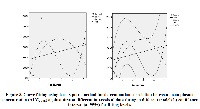Paradoxical effect of coating on natural guar gum blended carbomer matrix systems for the neurological depressive disorders
Keywords:
Matrix tablets, Duloxetine HCl, Sustained release, Enteric coating, Hixon-crowell modelAbstract
Oral extended release products offer potential advantages in patient compliance and therapeutic outcomes like sustained blood levels with attenuation of adverse effects. In neuropsychiatric disorders like depression, most of the formulations serve a marketing objective rather than a clinical objective. The present investigation was aimed to develop a once daily sustained release formulation for delivery of an acid-labile, water soluble antidepressant, duloxetine HCl. The formulation was pragmatically designed using blend of natural and synthetic polymeric biomaterials that it releases the drug at alkaline pH in a sustained manner. The basic intention was to develop a tablet formulation with hydrophilic matrix core, using blend of release retarding natural biodegradable polymers such as guar gum, carbopol 71G-NF (a synthetic carbomer) and C-Pharm® gel. Barrier coating using HPMC-E5 was given to retard the initial release followed by enteric coating with HPMC-AS to prevent exposure of drug in acidic mileau of the stomach. The formulation exhibited desired release pattern and was described best-fit by Hixon-Crowell model. Stability analysis under stress conditions up to one month displayed good reproducibility. The matrix tablets successfully decreased the symptoms of depression (significant decrease in immobility time) in a rat forced swimming model. Pharmacokinetic data of the formulation revealed (tmax ~ 6 h, Cmax ~ 1157.58 ng/ml, mean AUCt~11145.04 ng*h/ml, and Ka~1.07h-1) good correlation in all animals.
References
Tripathi KD. Essentials of Medical Pharmacology.
thedn. New Delhi: Jaypee Publishers, 2003; 405-
Chen LS, Eaton WW, Gallo JJ, Nestadt G.
Understanding the heterogeneity of depression
through the triad of symptoms, course and risk
factors: a longitudinal, population-based study. J
Affec. Disord. 2000; 59: 1–11.
London School of Economics. The Depression
Report: A New Deal for Depression and Anxiety
Disorders the Centre for Economic Performance’s
Mental Health Policy Group. 2006.
Kumar PK, Geeta MG. Clinical profile of
depressive disorder in children. Indian Pediatrics.
; 43:1383-1387.
Owens MJ, Morgan WN, Plott SJ, Nemeroff CB.
Neurotransmitter receptor and transporter binding
profile of antidepressants and their metabolites. J
Pharmacol. Exp. Ther. 1997; 283: 1305-1322.
Baldessarini RJ. Drugs and the treatment of
psychiatric disorders. In: Goodmann and Gilman’s
Pharmacological Basis of Therapeutics, 10th ed.;
New York: Mcgraw-Hill Medical Publishing
Division; 2001; 447-485.
Kilts CD. Potential new drug delivery systems for
antidepressants: an overview. J Clin Psychiatry
; 64: 31-33.
Stahl SM. Essential Psychopharmacology. 2nd edn.
New York, NY: Cambridge University Press, 2000.
Turcotte JE, Debonnel G, deMontigny C, Hébert C,
Blier P. Assessment of the serotonin and
norepinephrine reuptake blocking properties of
duloxetine in healthy subjects.
Neuropsychopharmcol. 2001; 24: 511-21.
Wiegand A, Bligenstorfer S, Magalhaes AC, Sener
B, Attin T. Impact of the in situ formed salivary
pellicle on enamel and dentine erosion induced by
different acids. Acta Odontol. Scand. 2008; 66: 1-6.
Ciulla L, Menezes HS, Bueno BBM, Schuh A,
Alves RJV, Abegg MP. Antidepressant behavioral
effects of duloxetine and fluoxetine in the rat forced
swimming test. Acta Cirúrgica Brasileira. 2007; 22:
-354.
Chilamkurti RN, Schwartz JB, Rhodes, CT. Effect
of addition of a soluble and insoluble drug on the
disintegration of tablet made of microcrystalline
cellulose and dicalcium phosphate dehydrate.
Pharm Acta Helv. 1983; 58: 251–255.
Cameron CG, McGinity JW. Controlled release
theophylline tablet formulations containing acrylic
resins III. Influence of filler excipients. Drug Dev
Ind. Pharm. 1987; 13: 303–318.
Khan GM, Zhu JB. Studies on drug release kinetics
from ibuprofen–carbomer hydrophilic matrix
tablets: influence of co-excipients on release rate of
the drug. J Control Rel. 1999; 57: 197–203.
Higuchi T. Mechanism of sustained-action
medication: Theoretical analysis of rate of release
of solid drugs dispersed in solid matrices. J Pharm.
Sci. 1963; 52: 1145–1149.
Hixson AW, Crowell JH. Dependence of reaction
velocity upon surface and agitation. Ind. Eng.
Chem. 1931; 23: 923–931.
Korsmeyer RW, Gurny R, Doelker EM, Buri P,
Peppas NA. Mechanism of solute release from
porous hydrophilic polymers. Int. J. Pharm. 1983;
: 25–35.
Peppas NA. Analysis of Fickian and non-Fickian
drug release from polymers. Pharm. Acta. Helv.
; 60: 110–111.
Sankalia JM, Sankalia MG, Mashru RC. Drug
release and swelling kinetics of directly compressed
glipizide sustained-release matrices: Establishment
of level A IVIVC. J Control Rel. 2008; 129: 49-58.





